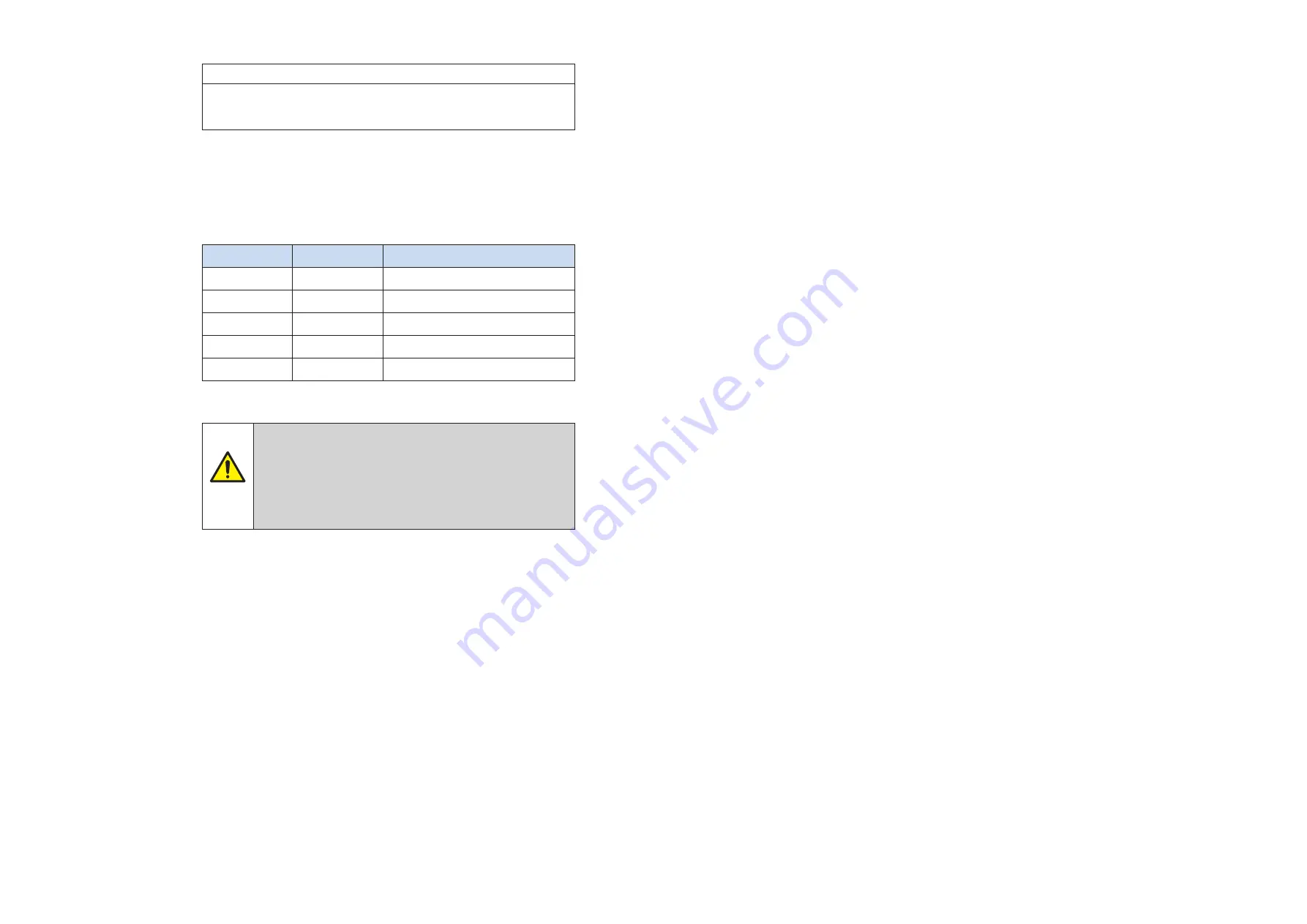
24
25
INM MTL9373-FB3 Rev 1
INM MTL9373-FB3 Rev 1
NOTE
The Power LED will not light until the voltage at the barrier has risen to a value of
at least 15.7V, but could remain lit even after the voltage has dropped to around
13.0V. DO NOT assume the Power LED indicates a voltage of 16V or more.
If the green Power LED is not lit, check:
• the polarity and integrity of the trunk cable connections to the enclosure.
• that the d.c. supply powering the incoming trunk is operating correctly.
Spur LEDs
Colour
State
Description
Green
Steady
Channel powering spur, spur OK
Green
Flashing
Channel powering spur, spur open
Red
Steady
Internal fault
Orange
Steady
Short to shield
Orange
Flashing*
Short circuit, current limit
* Flashing occurs at a rate of approximately 2 pulses per second.
CAUTION!
9373-FB3 Fieldbus Barrier modules are designed to operate reliably
in industrial environments and comply with international standards for
immunity to electromagnetic radiation. However, damage may occur if
the apparatus is exposed to extreme levels of radiated electrical noise,
for example from “walkie-talkie” radios, or electric arc-welding. If local
welding activity is unavoidable, power should first be removed from
the module.
8
ATEX INFORMATION
The Essential Health and Safety Requirements (Annex II) of the EU Directive
2014/34/EU [the ATEX Directive - safety of apparatus] requires that the installation
manual of all equipment used in hazardous areas shall contain certain information.
This annex is included to ensure that this requirement is met. It complements the
information presented in this document and does not conflict with that information.
It is only relevant to those locations where the ATEX directives are applicable.
8.1 General
a) In common with all other electrical apparatus installed in hazardous areas,
this apparatus must only be installed, operated and maintained by competent
personnel. Such personnel shall have undergone training, which included
instruction on the various types of protection and installation practices, the
relevant rules and regulations, and on the general principles of area
classification. Appropriate refresher training shall be given on a regular basis.
[See clause 4.2 of EN 60079-17].
b) The apparatus has been designed and manufactured so as to provide
protection against all the relevant additional hazards referred to in Annex II of
the Directive, such as those in clause 1.2.7.
c) This apparatus has been designed to meet the requirements of electrical
apparatus in accordance with EN 60079-0, EN 60079-7, EN 60079-11 and
EN 60079-18.
8.2 Installation
a) The installation should comply with the appropriate European, national and
local regulations, which may include reference to the IEC code of practice
IEC 60079-14. In addition, particular industries or end users may have specific
requirements relating to the safety of their installations and these
requirements should also be met. For the majority of installations, the
Directive 1999/92/EC [the ATEX Directive – safety of installations] is
also applicable.
b) The equipment is certified: Baseefa19ATEX0023X and is designed for
installation in Zone 1, Zone 2, Zone 21 or Zone 22 hazardous areas if mounted
in a suitable enclosure.
c) The apparatus must not be subjected to mechanical and thermal stresses in
excess of those permitted in the certification documentation, this manual and
the product specification.
d) All cables and their glands must be chosen to withstand the temperatures at
which the apparatus is designed to operate. See product specification
for details.
e) The apparatus must not be installed in a position where it may be attacked by
aggressive substances.
Read also the Special Conditions for Safe Use (below) for any additional or more
specific information.
8.3 Special Conditions for Safe Use
1. The equipment shall only be powered from supplies conforming to IEC 61158.
2. When a TP32 Trunk Surge Module is fitted, the power input circuit will not
withstand a 500V a.c. isolation test to earth. This must be taken into account
during installation.
3. When one or more FS32 Spur Surge Modules are fitted, the spur outputs will
not withstand a 500V a.c. isolation test to earth. This must be taken into
account during installation.
4. When the enclosure is fitted with a hinged lid, it shall only be mounted in a
vertical orientation on a flat surface, and care is required in the installation
process and when opening the hinged lid to ensure the enclosure does
not distort.
continued



































